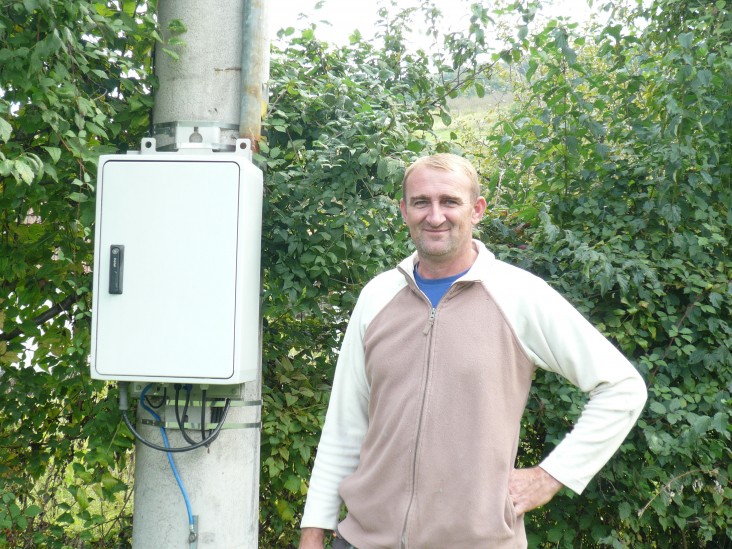Speeches Shim

November 2016—To the people of Brcko, Bosnia and Herzegovina, unpredictable power outages were a way of life that impacted businesses, schools and homes. During storms or technical failures, people could lose power for lengthy periods of time.
USAID and its partners, the United States Energy Association, Schweitzer Engineering Laboratories and Brcko Komunalna, the electric utility serving the Brcko district of Bosnia and Herzegovina, supported a smart grid technology pilot project from September 2015 through September 2016 that has dramatically improved the reliability of electricity for families and businesses in Brcko.
Schweitzer Engineering’s technology can instantaneously identify the location of power outages caused by storms and technical failures on Brcko’s distribution lines. When power went out prior to the project, employees would have to drive or walk along the power lines until they found the problem. The new technology not only reduces the number of trucks and employees needed to restore service, but also results in improved customer service and reduced emissions and expenses associated with the use of diesel powered backup generators.
“Thanks to this technology, our engineers know the precise location of a network fault, which improves the speed of repair on the distribution network and reduces the duration of interruptions in the supply of electricity,” said Samir Snagic, executive manager of Brcko municipality’s power utility division.
The project has reduced the number, frequency and duration of customer outages. Between September 2015 and September 2016, customers on an affected line experienced a 51 percent reduction in the number of outages and a 58 percent reduction—or about 8 hours—in the duration of outages compared with the same period the previous year.
“In the past year, there have been fewer complaints by local residents and, therefore, [they enjoy] a better quality of life,” said Ilija Andric, president of Gornij Zovik, a local community in Brcko.
“After years of problems, frequent power cuts and long-lasting interruptions, residents in this local community have a regular supply of electricity,” said Radivoye Djuric, president of the Potocari community in Brcko.
This project was part of a larger effort in the region to show distributors that smart grid technology could increase their resiliency and ability to respond to outages caused by weather events, particularly as extreme weather events related to climate change are on the rise. The effort was spearheaded by the Southeast Europe Distribution System Operator Security of Supply Working Group, which was started jointly by USAID and the United States Energy Association in 2013. Although the Brcko pilot project was relatively small, impacting about 2,500 people, it demonstrated the success of the smart grid concept. Other projects with a similar technology and approach are currently being considered in Moldova and Ukraine.
LINKS

Comment
Make a general inquiry or suggest an improvement.